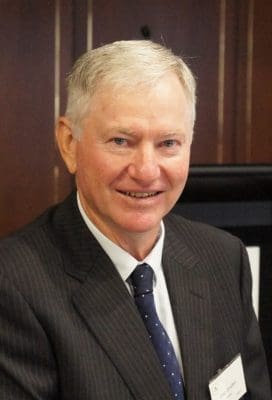
In this contributed article, former S. Kidman CEO Greg Campbell, a member of the Australian Beef Sustainability Framework, presents evidence of how the beef industry is ‘doing more with less.’
AS recently reported (Beef Central 26 September 2018), Cameron Bruett, the JBS head of corporate affairs, urged our industry to recognise the societal pressures facing us, to aggressively promote our successes in the area of sustainability, and to “do more with less”.
One significant area where the Australian grazing industry has for several decades been doing more with less, is the declining area of land available for grazing.
Over the 20 years for which land usage data is available on the ABARES website an interesting, and for the grazing industry at least, and concerning trend has become well established.
In area, land given to conservation was one third (33 percent) of that used for grazing in 1997, but 20 years later, lands given to conservation had grown to just over half (51pc) of that used for grazing.
The relativity and trends can be seen in the graph. It should be noted that in this chart I’ve lumped lands designated for conservation with lands protected for traditional Indigenous use or other forms of protection from commercial use and development.
Vacant crown land, a substantial ungrazed land area in WA especially, has not been lumped with conservation. Grazing lands include those lands where grazing occurs on natural vegetation or modified pastures, but excludes farmed or irrigated land which might at times support livestock.
Over the 20 years, the land used for grazing has declined 15pc while the land area allocated to conservation and other forms of protection has grown by 33pc. Of the land lost to grazing, 26pc has been converted to dryland cropping, but by far the majority (70pc) has gone to conservation or other forms of protection.
On current trends, the area of land under conservation or protected from commercial uses will exceed that allocated to grazing by the year 2045. By then, both grazing and conservation will each command around 35pc of the Australian land area. It’s already the case that the land allocated to conservation/protection exceeds 35pc of the land area in South Australia, the Northern Territory, Tasmania and the ACT.
This information is from the detailed but little publicised work by the Australian Collaborative Land Use and Management Program (ACLUMP), a partnership between the Australian Bureau of Agricultural Resource Economics & Sciences (ABARES) and the relevant state land management agencies.
Detailed satellite mapping is matched to state titles and other records of land use to look at the areas of land under grazing, farming, conservation, urban and other uses. The data is reported approximately every five years and is available at www.agriculture.gov.au/abares/aclump/land-use.
Societal and political change
It’s worth reflecting on what might turn societal and political change more in favour of grazing.
Famine would. But in a wealthy, first-world country, even extended and widespread drought such as the present event, doesn’t equate to famine as it does in many other parts of the world. Australia can and does import food to fill any gaps or access cheaper sources to boost retailer margins. There are also people who believe that some foods, such as beef, can be replaced with a factory-made product.
Much of the answer to moving consumer and political sentiment more in favour of grazing lies in proving our industry’s credentials in the areas of present consumer concerns (managing soil, water and vegetation, and looking after animals) and those starting to emerge (management of antibiotics, farm safety).
In today’s terminology, these matters are packaged up as sustainability, and the industry has good work underway to establish baselines and report progress through the Australian Beef Sustainability Framework, see: www.sustainableaustralianbeef.com.au, or view this new, short video:
The Australian Beef Sustainability Framework can help demonstrate to customers (both domestic and overseas), and to the wider community and government the vital role our industry plays in managing the landscape not only to produce food, but to protect the resource base and much biodiversity with it.
The majority of beef producers care for the land they manage. In many instances active land management, including management of weeds, pests and fire is only possible because the cattle industry keeps people with skills, equipment and other resources living in non-urban areas.
We also need to do what we can across the supply chain to minimise any failures which might result in adverse headlines.
As an industry, we need to further build credibility and trust with the community and government who become progressively less connected to the sources of their food. Otherwise we risk land access continuing to decline.
If the trend continues, in less than 30 years the grazing industry will certainly be doing with much less land. While the productivity gains coming through the application of genetics, other technologies, and increased lotfeeding, will help to deliver more from less, the beef industry needs the social licence (and the resulting land access) to continue producing high quality, safe, nutritious beef, and also to thrive.
Greg Campbell – Member of the Australian Beef Sustainability Framework




A valuable contribution to the discussion on land use for primary production.
Bruce Alchin, Rangeland Management Consultant
This article needs to be published in main stream media not just commodity speciLised press
Good discussion, this is the future.
Andrew Negline
CEO
Stockwell Livestock